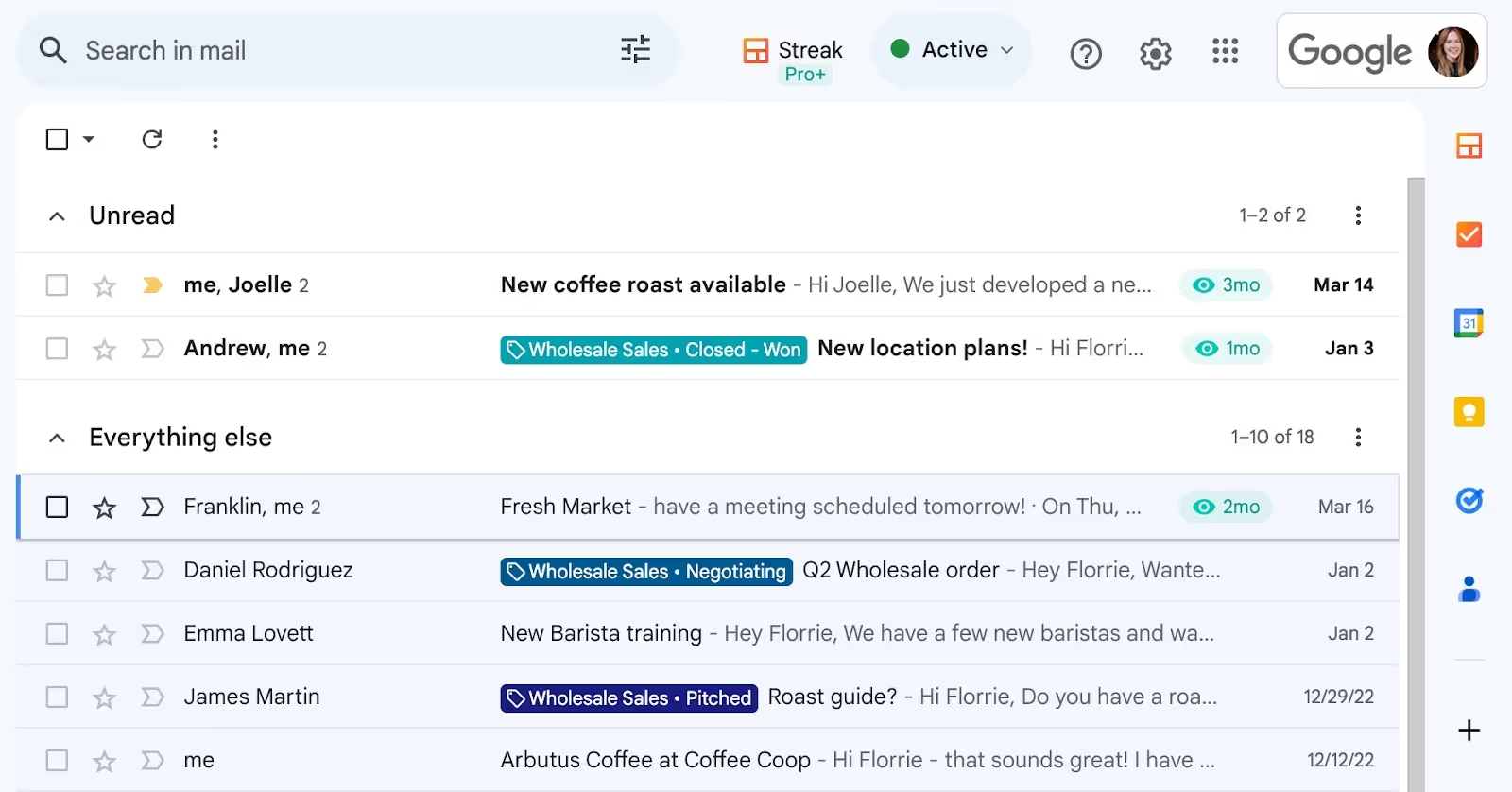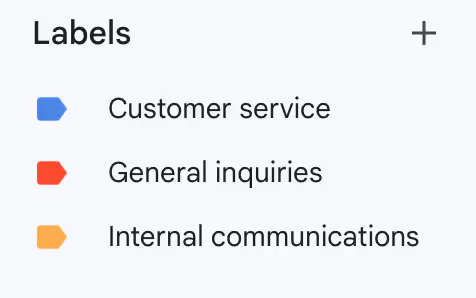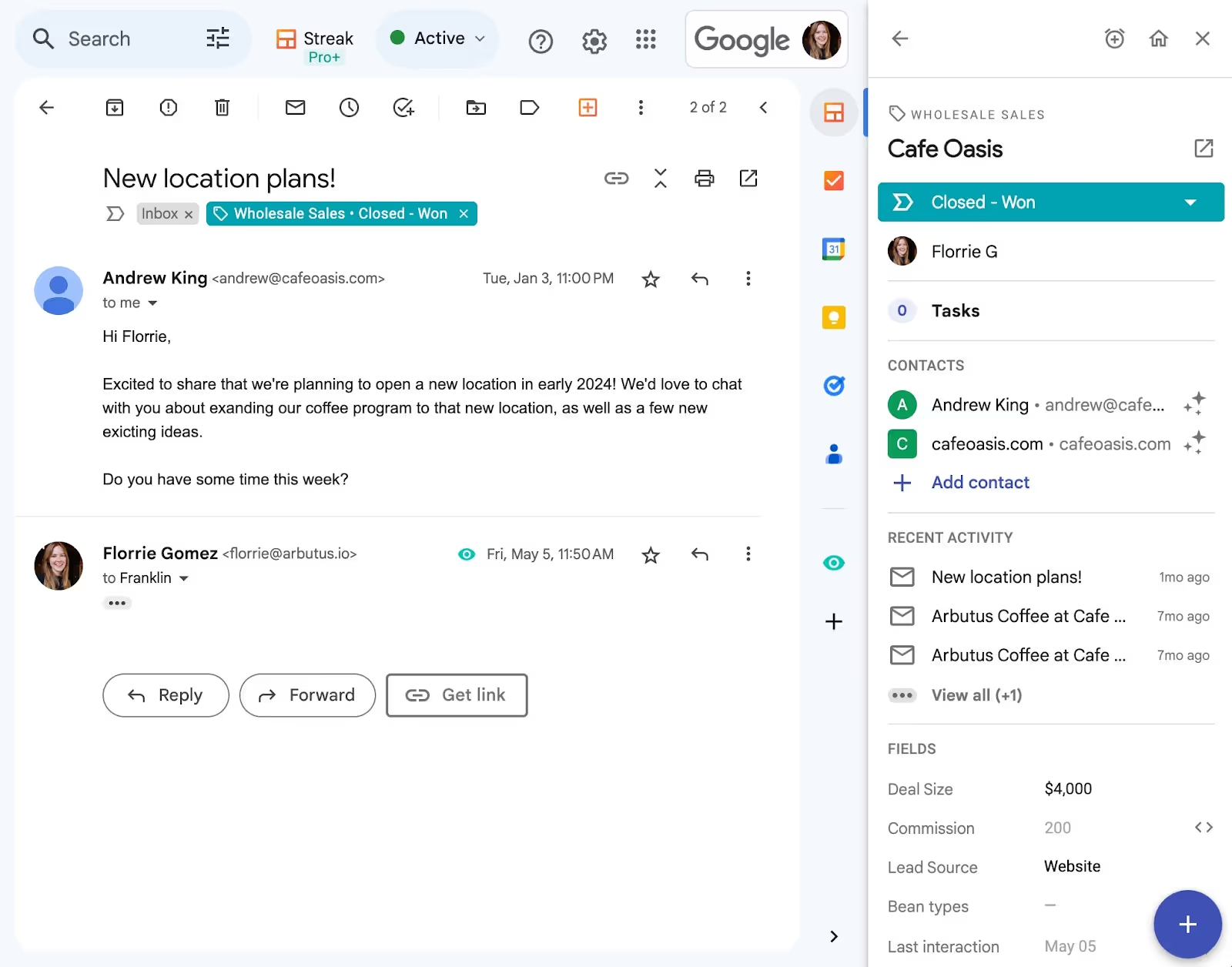How to select all emails in Gmail
Learn how to select every email in Gmail or hone in on a specific group of emails to take bulk action and keep your Gmail inbox organized.
Is your Gmail inbox a mess? Do important emails get lost between spam and other low-priority messages? Do you spend more time stressing over your inbox than actually responding to emails?
You’re not alone if your Gmail inbox isn’t as organized as you’d like it to be. Get your inbox under control with these tips on how to organize your Gmail inbox.
<a href="#importance-organized-inbox" class="anchor-link">Why is it important to keep your inbox organized?</a>
<a href="#organizing-gmail-inbox" class="anchor-link">8 Tips on organizing your Gmail inbox</a>
<a href="#using-streak" class="anchor-link">Using Streak to stay organized</a>
<div class="anchor-wrapper"><div id="importance-organized-inbox" class="anchor-target"></div></div>
If you’re like most professionals today, your email inbox is the central hub of everything you do. It has your company communications, questions from clients, sales pitches, conversations with coworkers — the list goes on and on. Keeping your inbox organized is key to staying on top of all those components of your work.
Having a messy, disorganized inbox, on the other hand, can lead to problems like:
Organizing your inbox will make you more productive and lower your stress levels. You won’t constantly interrupt your workflow to check your email, lose track of email threads, or struggle to prioritize the right messages. Put simply, keeping your inbox organized lays the groundwork for doing better work.
<div class="anchor-wrapper"><div id="organizing-gmail-inbox" class="anchor-target"></div></div>
Organizing your Gmail inbox is a two-pronged effort. First, you should do a “deep clean” and lay the groundwork for lasting organization with some setup tweaks and automations. Then, start building some reliable daily email habits so your newly organized inbox stays that way.
Sitting down and getting your entire inbox in order may sound like a Herculean effort, but it doesn’t need to be overwhelming. And once you tackle those one-time setup and automation tasks, daily email organization will be so much more manageable.
These tips on how to organize your Gmail inbox will help you get started:
<div class="anchor-wrapper"><div id="one-time-efforts-automations" class="anchor-target"></div></div>
Start with these actions to kick off your inbox organization. If you can maintain some of the regular tasks and tips laid out later in this article, you'll only have to do these efforts and automations once.
<div class="anchor-wrapper"><div id="change-inbox-layout" class="anchor-target"></div></div>
The default Gmail inbox setting automatically sorts your incoming emails into different tabs, such as “Primary” and “Promotions.” A different inbox layout may be better for your needs and preferences, so don’t be afraid to change it.

The other layout options Gmail offers are:
With the “Priority Inbox” setting, for example, Gmail will separate your inbox into sections of your choosing, such as “Starred,” “Important and unread,” and “Everything else.” Choose the layout that will put your most relevant emails at the top of your inbox.
Find and change your inbox layout in the Quick Settings menu under “Inbox type.”
<div class="anchor-wrapper"><div id="create-gmail-labels" class="anchor-target"></div></div>
Instead of folders, Gmail uses labels to help you sort your emails into different categories. Your labels are completely personalizable, and a single email can have multiple labels. Once created, these labels will appear on the left-hand side of your inbox, letting you view emails in those categories with a single click.

The label tags also show up directly in your inbox on each labeled email. Add labels to each email manually or set up filters to automatically label emails that meet specific criteria. Gmail will then apply the correct label to those emails as they come into your inbox.
<div class="anchor-wrapper"><div id="set-up-filters" class="anchor-target"></div></div>
Gmail filters aren’t just for adding automatic labels. Use Gmail filters to create other automations in your inbox, such as:
With Gmail tackling these tasks automatically, you’ll have more time to take action on the content of your emails instead of manually organizing them.
<div class="anchor-wrapper"><div id="delete-archive-emails" class="anchor-target"></div></div>
There are probably emails sitting in your inbox right now that aren’t at all relevant. They’re just taking up space and getting in the way of emails you really do need. Well, time’s up.
As part of your inbox deep clean, go through and delete all the emails you will never need again. If there are some emails you don’t need right now but might need later, archive them.
To maximize efficiency, you can find groups of emails by sender or keyword, and select all of them to take bulk action rather than combing through your inbox one-by-one.
Archiving emails takes them out of your inbox but doesn’t remove them entirely. Once archived, you can still find these emails by searching for them or going to the “All mail” folder in Gmail. They’ll be out of the way but still accessible in case you ever need to refer back to them.
<div class="anchor-wrapper"><div id="unsubscribe-emails" class="anchor-target"></div></div>
If you’re on mailing lists that no longer interest you or receiving a flurry of promotions every day, it’s time to unsubscribe. Next time you go to delete or archive one of those emails, click the “Unsubscribe” button instead. Excess newsletters or campaigns will only clog up your inbox and get in the way.
Even with these setups and automations in place, you’ll still need to do some daily maintenance to keep your inbox organized. Try the following:
<div class="anchor-wrapper"><div id="schedule-checking-email" class="anchor-target"></div></div>
It’s tempting to enable alerts and immediately check your inbox whenever a new email comes in. That kind of constant distraction is just going to make you less productive, though. Instead, dedicate specific periods during the day to checking your inbox and addressing new emails. Try once in the morning and once in the afternoon or another variation that works for you.
During these periods, delete or archive new unnecessary messages, forward messages that a team member could better address, and respond to emails you can draft a quick response to. Defer any other emails until later.
<div class="anchor-wrapper"><div id="add-labels-filters" class="anchor-target"></div></div>
You probably can’t create a filter that addresses every email that comes into your inbox. Stay organized by manually adding labels as necessary to emails without automatic labels.
The labels and filters you create on day 1 of organizing your inbox may not always apply going forward. If you’re in the process of completing a big new deal, for example, you may want to create a new label and filter for emails related to that deal. Make sure your labels and filters always reflect the work you’re doing.
<div class="anchor-wrapper"><div id="touch-it-once-rule" class="anchor-target"></div></div>
Nearly everybody has a handful of emails in their inbox that they open, stare at for a few minutes, and close again, resolving to deal with it next time. After weeks or even months, these emails still haven’t been addressed and begin to clutter your inbox.
To maintain organization in your inbox, adhere to a 'touch it once' rule: every time you open an email, take immediate action.
Either respond right away if it takes less than two minutes, delegate it if someone else can handle it, defer it by scheduling a time to respond, or delete it if it's not needed. Remember, the goal isn't to keep your inbox empty, but to ensure every email has been addressed effectively.
<div class="anchor-wrapper"><div id="using-streak" class="anchor-target"></div></div>
Gmail extensions like Streak can make it even easier to keep your inbox organized while also providing valuable insights about your contacts and email conversations.

Streak is a tool built directly into Gmail that helps you track processes like sales, hiring, and customer service through pipelines.
Once a deal or opportunity is in one of your pipelines, you can tell Streak to group all of your team’s conversations with relevant contacts into each deal and label them accordingly in your inbox.

Add a contact to a box in your pipeline, turn on automatic email sharing, and Streak will automatically add color-coded labels to the related emails, including new incoming and outgoing messages. That way, you can see at a glance which stage each deal or opportunity is in — right from your inbox.
Once an email is added to Streak, you’ll be able to find all of the relevant details, interaction history, and more alongside your email conversation. You can also add information or take action to make sure deals in your inbox keep moving forward.
Set aside some time to get your Gmail inbox in order, and your entire workflow will change for the better. With the help of Gmail’s built-in features and powerful extensions like Streak, you can organize your inbox like a pro.
Try Streak free today to start making your inbox a more productive place.
